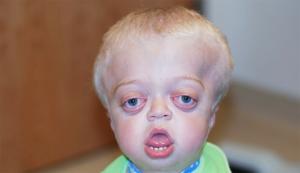Affective flattening: symptoms, causes and treatment
The affective flattening is one of the evidences that mental disorders escape our preconceived schemes about what it means to suffer.
This is so because people who experience this mental phenomenon, despite having their ability to experience and express emotions reduced, do not feel discomfort due to this fact itself, as one would expect from someone who is repressed, but in any case suffers from the consequences that this fact generates in their environment Social.
In this article we will see what they are the typical signs of affective flattening, its causes and the treatments associated with this phenomenon.
- Related article: "The 16 most common mental disorders"
What is affective flattening?
The affective flattening is a psychological phenomenon related to the lack of expression and experimentation of emotions. In fact, this condition is also simply called emotional indifference, since whoever experiences acts as if he is not interested in the emotional background, his own or others, of the situations that lives.
For example, a person with emotional flattening may remain indifferent to a traffic accident with serious injuries, or not react to seeing a family member cry. In the same way, will not show to be very happy or very angry, or it will be very difficult for him to react in that way (or in a way that is shyly reminiscent of expressing those emotions)
Furthermore, as we shall see, affective flattening is a typical symptom of severe mental disorders such as schizophrenia, as well as the dementias and other neurological diseases.
Emotional indifference: symptoms
It must be borne in mind that although affective flattening almost always goes hand in hand with other symptoms that damage the quality of life of the person, in itself it is neither sadness nor stupor, nor any other state that generates psychological pain. It is not only the absence of intense positive emotions, but also the significant reduction in the frequency and intensity with which negative emotional states occur.
Now, keep in mind that there is no pure affective flattening, and most people who experience this condition first-hand can develop experience emotions to a greater or lesser extent, even if only in exceptional situations important. As in any psychological trait, the expression and experience of emotions goes to quantities, not everything is “yes or no”.
The difference with anhedonia
Affective flattening is not exactly the same as anhedonia. The latter is, in a strict sense, the inability to feel pleasure.
Although in many cases affective flattening and anhedonia go hand in hand and consequently it is sometimes difficult to distinguish the effects of an of the other (as it occurs in the same individual), in affective flattening the indifference towards emotions is global, while what in anhedonia it focuses only on the appreciation of the pleasant character of experiences.
- Related article: "Anhedonia: the inability to feel pleasure"
The difference with depression
The affective flattening should not be confused with the effect that depression has on the mood.
While depressive disorders cause anhedonia and a general low mood, people with affective flattening do not feel low. They simply experience emotions in a very little intense way, or do not experience them at all: neither positive nor negative. That is why it is frequent that emotionally they do not say they have a problem, since it is not something that causes them discomfort.
For example, it is not the same that a smoker does not appreciate the taste of a cigarette than that he cannot feel sorry for the death of a pet.
Causes of affective flattening
The causes of affective flattening almost always have to do with other problems and symptoms that constitute a mental disorder or neurological disease. In this sense, Autism Spectrum Disorders, schizophrenia and dementias stand out.
1. TORCH
Some autistic people find it difficult to vividly experience and express emotions. This, added to the rest of the problems they have when communicating with others, makes their social relationships difficult.
- Related article: "Autism Spectrum Disorders: 10 symptoms and diagnosis"
2. Schizophrenia
In some patients with schizophrenia, affective flattening is also common. This phenomenon would be one of the symptoms associated with the severe psychological alterations that this pathology produces.
Thus, in schizophrenia, affective flattening is part of the so-called negative symptomsThose that have to do with the lack of certain psychological processes, and not with their excess or their unwanted presence (the latter is what happens, for example, with hallucinations).
3. Dementias
People with dementia may present affective flattening as a result of the progressive impoverishment of the variety of mental experiences that suffer because of the degradation of the brain.
Treatment
The affective flattening is not treated as something isolated, but as one of the manifestations of a mental disorder or illness. That is why the efforts of clinical intervention programs are directed at the root of this problem, something that depends on each case and the characteristics of the patients. Yes indeed, the use of psychotropic drugs is usually required.
- You may be interested: "Types of psychotropic drugs: uses and side effects"


